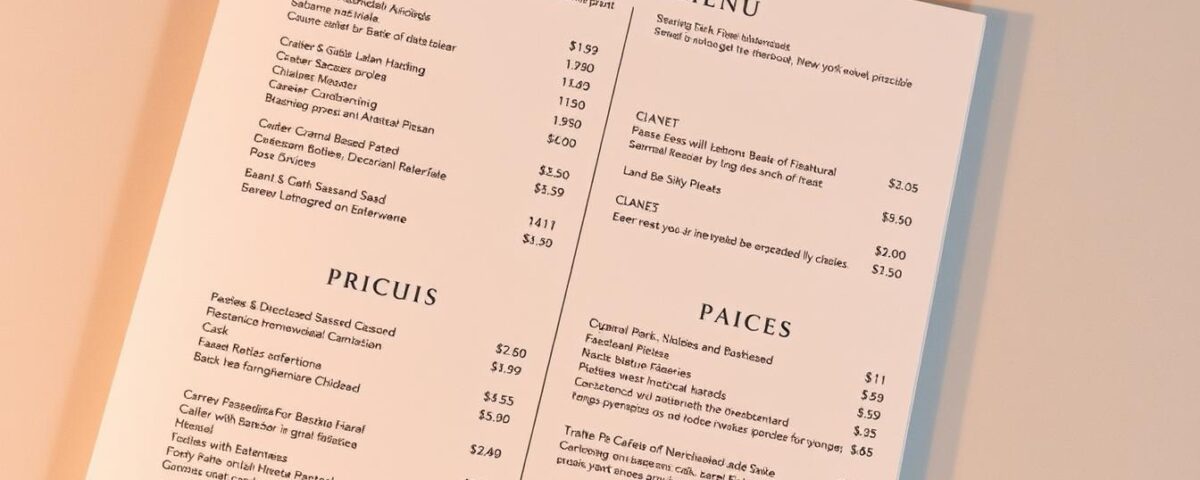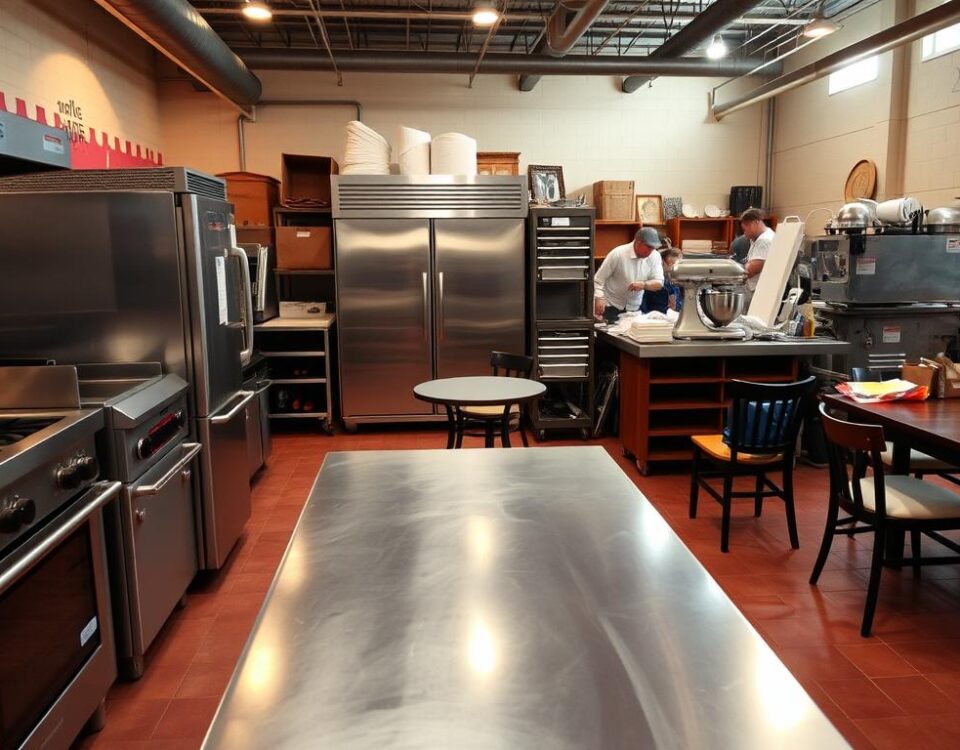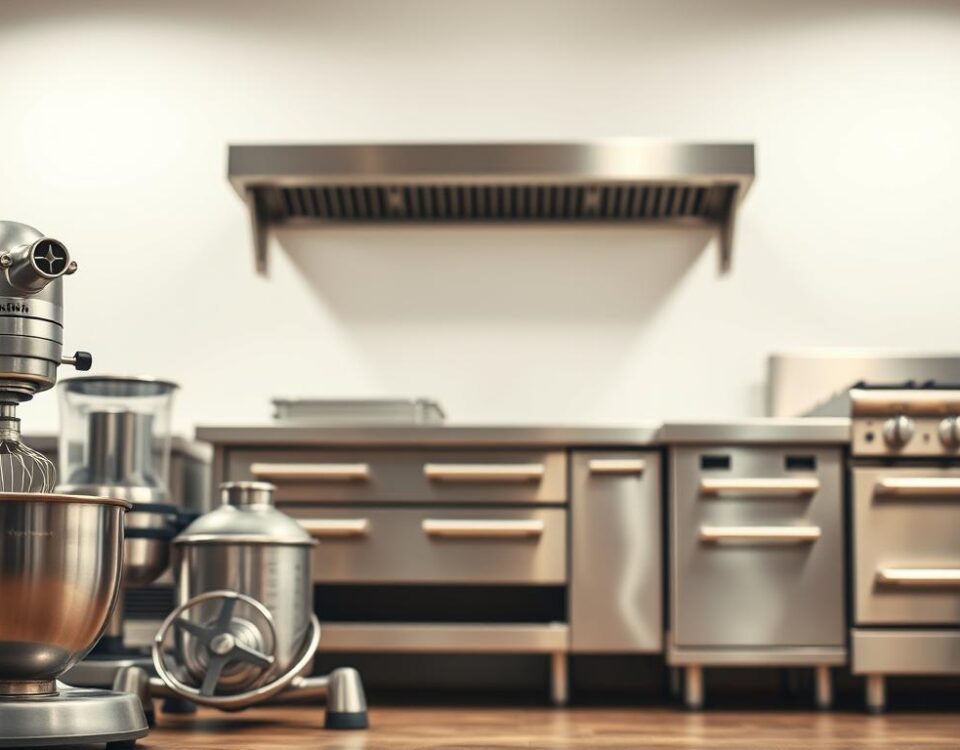
5 Golden Rules for Buying Wholesale Food for Your Restaurant
August 15, 2025
How to Boost Restaurant Sales 30 % with This Marketing Roadmap
August 16, 2025As a restaurant owner in New York, you’re likely no stranger to the challenges of balancing profitability with customer satisfaction. I recall a conversation with a restaurateur who struggled to maintain profit margins due to fluctuating produce costs. Did you know that a 10% increase in produce costs can lead to a 3% decrease in profit margins if not adjusted accordingly?
Pricing menus effectively is both an art and a science, requiring a deep understanding of local food costs and market trends. In this guide, I’ll walk you through the process of creating profitable menus that appeal to New York diners, taking into account the unique challenges and opportunities of the NYC market.
Key Takeaways
- Understand the critical relationship between New York produce costs and successful menu pricing.
- Learn how to create profitable menus that balance quality and value for New York diners.
- Discover practical formulas and strategies for effective menu pricing in the NYC restaurant scene.
- Understand how seasonal fluctuations in produce costs can impact your restaurant’s bottom line.
- Develop menus that balance profitability with customer satisfaction in the competitive NYC dining landscape.
Understanding the Impact of New York Produce Costs on Menu Pricing
New York’s culinary scene is renowned for its diversity, but beneath the surface lies a complex web of produce costs that significantly impact menu pricing. As a restaurant owner in New York, understanding these costs is crucial for creating a menu that is both appealing to customers and profitable for your business.
The Unique Challenges of New York’s Produce Market
New York’s produce market is characterized by higher costs due to factors such as transportation, storage, and the premium placed on locally-sourced ingredients. The city’s diverse culinary scene creates both opportunities and challenges for restaurants trying to source quality produce at reasonable prices. For instance, the density of restaurants in New York drives up competition for the best produce, often resulting in higher costs compared to less competitive markets. As noted in a recent article onsourcing fresh fruits, the availability of high-quality produce can significantly impact menu planning.
The table below illustrates the seasonal fluctuations in produce costs:
| Season | Meat & Poultry Costs | Fruits & Vegetables Costs |
|---|---|---|
| Late Spring | Higher | Lower |
| Summer | Higher | Lower |
| Fall | Lower | Higher |
| Winter | Lower | Higher |
How Seasonal Fluctuations Affect Your Bottom Line
Seasonal changes in New York’s climate dramatically affect produce availability and pricing throughout the year. For example, meat and poultry are typically more expensive in late spring and summer, while fruits and vegetables are at their lowest price point during the same period. Understanding these fluctuations is essential for creating a menu pricing strategy that can adapt to New York’s unique produce landscape. By analyzing these trends, restaurants can make informed decisions about menu offerings and pricing to maintain profitability.
Calculating Your Restaurant’s Food Cost Percentage
Accurate menu pricing starts with knowing your restaurant’s food cost percentage, a critical metric for New York eateries. This figure represents the ratio of ingredient costs to the revenue generated by selling a dish.
Food Cost Percentage Formula for New York Restaurants
The standard formula for calculating food cost percentage is: Food Cost Percentage = (Beginning Inventory + Purchases – Ending Inventory) / Sales. To apply this formula effectively, you need to track your inventory and sales meticulously.
For example, if your beginning inventory is $10,000, purchases total $5,000, ending inventory is $8,000, and sales are $20,000, your food cost percentage would be: (($10,000 + $5,000 – $8,000) / $20,000) * 100 = 35%.
| Component | Amount |
|---|---|
| Beginning Inventory | $10,000 |
| Purchases | $5,000 |
| Ending Inventory | $8,000 |
| Sales | $20,000 |
| Food Cost Percentage | 35% |
Setting Realistic Food Cost Targets in the NYC Market
While industry benchmarks suggest aiming for a food cost percentage of no more than 40%, New York restaurants may need to adjust this target due to higher local ingredient costs and real estate expenses.
To set realistic targets, consider your restaurant type, location within New York, and target customer demographic. For instance, upscale restaurants in Manhattan might aim for a lower food cost percentage due to higher menu prices, while casual eateries in outer boroughs might need to balance profitability with competitive pricing.

By understanding and managing your food cost percentage, you can create a menu pricing strategy that balances profitability with customer expectations in the competitive New York dining scene.
Essential Restaurant Menu Pricing Strategies for NYC Establishments
In the competitive NYC dining scene, choosing the right menu pricing strategy is vital for restaurant success. As a restaurant owner in New York City, you’re likely aware of the challenges in setting menu prices that balance profitability with customer expectations.
There are three primary pricing strategies that work well for NYC restaurants: cost-based pricing, competition-based pricing, and value-based pricing. Each has its advantages and is suited to different restaurant concepts and target demographics.
Cost-Based Pricing Method
Cost-based pricing involves calculating your menu prices based on the cost of ingredients, labor, and overheads. For example, if a dish costs $5 to make and you aim for a 30% food cost percentage, you’d price it at around $16.67. This method ensures you cover your costs, but it doesn’t directly account for customer willingness to pay.
Competition-Based Pricing in New York’s Competitive Scene
Competition-based pricing requires researching similar restaurants in your area to understand their pricing. For instance, if you run a Mexican restaurant, gather menus from a dozen similar establishments and compare your offerings. This helps you position your menu prices strategically, either to compete directly or to differentiate your brand.
Value-Based Pricing for Upscale NYC Dining
Value-based pricing is particularly effective in NYC’s upscale dining scene, where customers are often willing to pay premium prices for unique experiences. This strategy focuses on the perceived value of your menu items, including factors like quality, presentation, and ambiance. For example, a high-end restaurant might charge more for a dish made with rare, locally-sourced ingredients.
To maximize profit, you can combine these strategies for different sections of your menu. For instance, you might use cost-based pricing for standard menu items and value-based pricing for specialty dishes. Understanding your target demographic and the local competition is key to choosing the right mix of pricing strategies.
| Pricing Strategy | Description | Suitable For |
|---|---|---|
| Cost-Based | Prices based on food cost percentage | Budget-conscious restaurants |
| Competition-Based | Prices compared to similar restaurants | Restaurants in competitive areas |
| Value-Based | Prices based on perceived value | Upscale, unique dining experiences |
By understanding and applying these pricing strategies, you can optimize your menu prices to achieve a balance between profit and customer satisfaction in the dynamic NYC dining market.
Step-by-Step Guide to Restaurant Menu Pricing Using NYC Produce
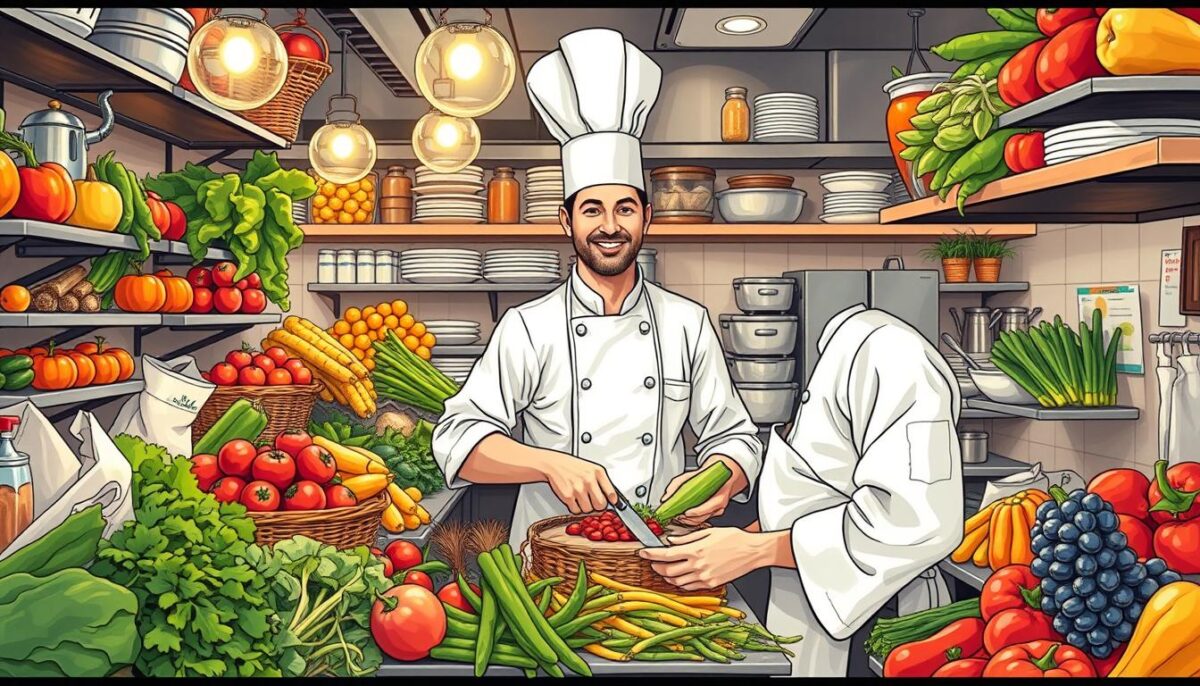
In the bustling NYC dining scene, mastering menu pricing using local produce costs is essential for staying competitive. To achieve this, you need to understand the intricacies of sourcing and costing local ingredients, calculating menu prices with seasonal fluctuations, and adjusting prices without alienating your customers.
Sourcing and Costing Local New York Ingredients
Building relationships with local New York vendors is crucial for securing the best prices on seasonal produce. By doing so, you can ensure that your menu items are not only fresh but also cost-effective. I recommend visiting local farmers’ markets to source high-quality ingredients.
Calculating Menu Prices with Seasonal Produce Fluctuations
To accurately calculate menu prices, you need to break down each dish into its component ingredients and factor in seasonal produce price fluctuations. For instance, the cost of tomatoes may vary significantly between summer and winter. By adjusting your menu prices accordingly, you can maintain profitability throughout the year.
Adjusting Prices Without Alienating Customers
When adjusting menu prices in response to produce cost changes, it’s essential to do so without alienating your customer base. This can be achieved by implementing price changes gradually and communicating the value proposition to your customers. Transparency is key to maintaining customer trust.
By following these steps and staying attuned to the NYC produce market, you can optimize your menu pricing strategy to drive profitability and customer satisfaction.
Balancing Profitability with Customer Expectations in New York
To thrive in New York’s vibrant dining scene, restaurants must master the art of balancing their profit margins with the high expectations of their customers. This delicate balance is crucial for maintaining a competitive edge in one of the world’s most diverse culinary markets.
Understanding NYC Diner Psychology and Spending Habits
New York diners are a unique breed, shaped by the city’s fast-paced lifestyle and diverse cultural influences. To effectively cater to these diners, it’s essential to understand their psychology and spending habits. For instance, New Yorkers tend to be savvy consumers who value quality and authenticity. They are also highly influenced by the dining experiences of others, making social proof a powerful tool in menu pricing strategies.
Some key factors to consider when understanding NYC diner psychology include:
- The importance of quality and freshness in menu offerings
- A preference for unique, locally-sourced ingredients
- A willingness to pay premium prices for exceptional dining experiences
Creating Perceived Value Through Menu Design and Descriptions
Creating perceived value is crucial for justifying menu prices and maintaining healthy profit margins. This can be achieved through thoughtful menu design and compelling item descriptions. By highlighting the use of premium ingredients, such as locally-sourced New York produce, restaurants can enhance the perceived value of their dishes.
Effective strategies for creating perceived value include:
- Using descriptive language that evokes the senses and emphasizes quality
- Incorporating images or illustrations that showcase the care and craftsmanship behind each dish
- Strategically pricing menu items to create a perceived value hierarchy
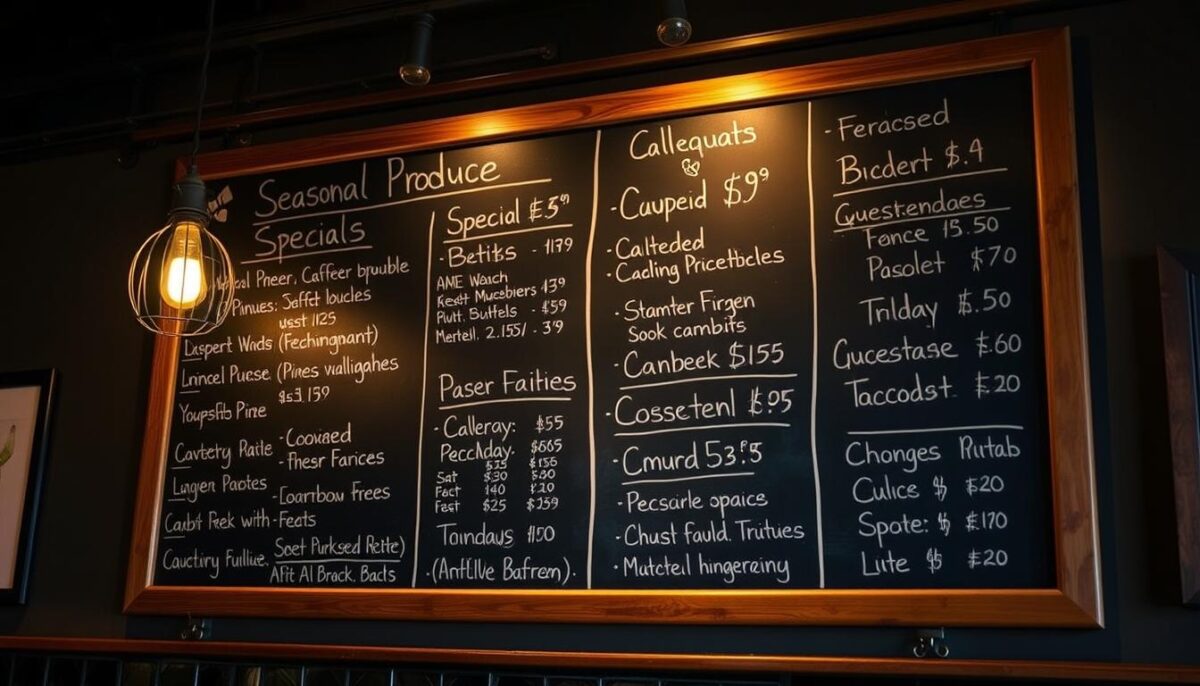
By understanding the unique psychology of New York diners and leveraging menu design and descriptions to create perceived value, restaurants can strike a balance between maintaining healthy profit margins and meeting the high expectations of their customers.
Menu Engineering Techniques for Maximizing Profits
Restaurants can increase their profitability by leveraging menu engineering techniques that focus on high-margin menu items. Menu engineering is the process of analyzing and optimizing your menu to maximize profit. By understanding the performance of each menu item, you can make informed decisions to boost sales and profitability.
Identifying Your Stars, Puzzles, Plowhorses, and Dogs
Menu items can be categorized into four types: stars, puzzles, plowhorses, and dogs. Stars are high-profit and high-popularity items, while puzzles are high-profit but low-popularity items. Plowhorses are low-profit but high-popularity items, and dogs are low-profit and low-popularity items. By identifying these categories, you can develop strategies to promote your stars and adjust your menu accordingly.
| Menu Item Category | Profitability | Popularity | Action |
|---|---|---|---|
| Stars | High | High | Promote |
| Puzzles | High | Low | Reposition or Remove |
| Plowhorses | Low | High | Reprice or Modify |
| Dogs | Low | Low | Remove or Replace |
Strategic Placement of High-Margin Items
Strategically placing high-margin items on your menu can significantly impact sales. Use design elements like boxes, bold text, and strategic placement to draw attention to these items without being obvious. This technique can help increase the visibility and sales of your most profitable menu items.
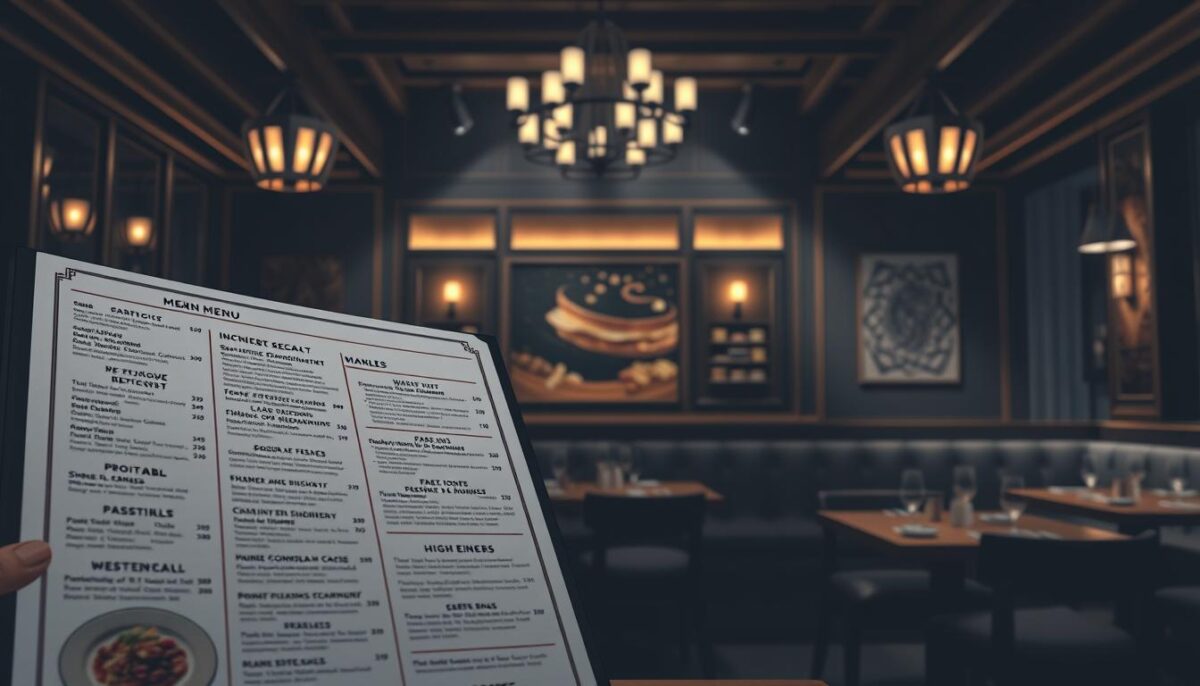
Using Seasonal Specials to Test Price Points
Seasonal specials featuring local New York produce can be used to test different price points and gauge customer response. This allows you to experiment with pricing strategies without committing to permanent changes. By analyzing the sales data from these specials, you can make informed decisions about pricing adjustments to maximize profit.
By applying these menu engineering techniques, you can optimize your menu for maximum profitability, ensuring that your restaurant remains competitive and successful.
Adapting to Market Changes and Vendor Price Fluctuations
In the fast-paced world of New York restaurants, being able to adjust to market changes and vendor price fluctuations is essential for long-term success. As a restaurant owner, you need to stay on top of these changes to maintain profitability without alienating your customers.
Building Strong Relationships with New York Produce Vendors
Establishing strong relationships with local produce vendors is crucial for securing the best prices and most reliable supply. To achieve this, consider:
- Communicating your needs clearly and consistently
- Being flexible with your ordering, especially during seasonal changes
- Negotiating contracts that benefit both parties
- Regularly reviewing vendor performance to ensure quality and reliability
Creating Flexible Menu Structures for Seasonal Changes
Designing menus that can adapt to seasonal fluctuations in produce availability is vital. This can be achieved by:
- Incorporating seasonal ingredients into your menu items
- Offering specials or limited-time offers based on available produce
- Training your staff to suggest alternative dishes when certain items are out of season
When and How to Implement Price Increases
When faced with rising produce costs, it’s essential to know when and how to implement price increases. Consider:
- Monitoring market trends to anticipate price changes
- Analyzing the impact of price increases on customer behavior
- Communicating changes to staff and customers transparently
- Offsetting rising costs through menu engineering rather than across-the-board price increases
By implementing these strategies, you can effectively manage the challenges posed by market changes and vendor price fluctuations, ensuring your restaurant remains competitive and profitable in the long run.
Conclusion: Sustainable Menu Pricing for Long-Term Success
By understanding the unique dynamics of New York’s produce market, restaurants can develop a sustainable menu pricing strategy that balances profitability with customer expectations. Throughout this guide, we’ve explored various strategies and formulas to help NYC restaurants achieve this balance.
The key to successful menu pricing lies in understanding the impact of New York produce costs on your menu. This involves calculating your restaurant’s food cost percentage and using it to inform your pricing decisions. We’ve also discussed essential menu pricing strategies, including cost-based, competition-based, and value-based pricing methods.
Effective menu pricing is an ongoing process that requires regular analysis and adjustment. By implementing the strategies outlined in this guide, restaurants can not only improve their short-term profitability but also achieve long-term business sustainability. As you move forward, I encourage you to view menu pricing as a creative opportunity to enhance your restaurant’s profitability while continuing to delight your New York customers.
Now is the time to put these strategies into action and start reaping the benefits of a well-crafted menu pricing strategy. By doing so, you’ll be better equipped to weather the seasonal fluctuations and market changes that are characteristic of New York’s competitive dining scene.
FAQ
How do I determine the food cost percentage for my establishment?
To calculate your food cost percentage, divide your total food costs by your total sales, then multiply by 100. For instance, if your total food costs are ,000 and your total sales are 0,000, your food cost percentage is 30%. This metric helps you understand the proportion of your revenue spent on ingredients.
What is the ideal food cost percentage for a restaurant in New York City?
The ideal food cost percentage varies depending on the type of establishment, its size, and the local market conditions. Generally, a food cost percentage between 28% and 35% is considered acceptable for many NYC restaurants. However, this can fluctuate based on factors like the restaurant’s concept, target audience, and pricing strategy.
How often should I review and adjust my menu prices?
It’s essential to regularly review your menu prices to ensure they remain competitive and profitable. I recommend assessing your menu prices at least quarterly, or whenever there are significant changes in ingredient costs, market conditions, or customer demand. This allows you to make timely adjustments and maintain your profit margins.
What are some effective strategies for adjusting prices without alienating customers?
To adjust prices without alienating customers, consider implementing price increases gradually, rounding prices to appealing numbers, or introducing new menu items at higher price points. You can also use value-based pricing to emphasize the quality and uniqueness of your offerings, making price increases more palatable to customers.
How can I balance profitability with customer expectations in a competitive market like NYC?
To strike a balance between profitability and customer expectations, focus on creating perceived value through menu design, descriptions, and presentation. Understand your target audience’s preferences and spending habits to tailor your offerings and pricing strategy. By doing so, you can maintain profitability while meeting customer expectations and staying competitive in the NYC market.
What role do seasonal fluctuations play in menu pricing, and how can I adapt?
Seasonal fluctuations significantly impact menu pricing, as ingredient costs and availability change throughout the year. To adapt, I recommend regularly reviewing your menu pricing and adjusting it according to seasonal variations in ingredient costs. You can also use seasonal specials to test new price points and keep your menu fresh and exciting for customers.
